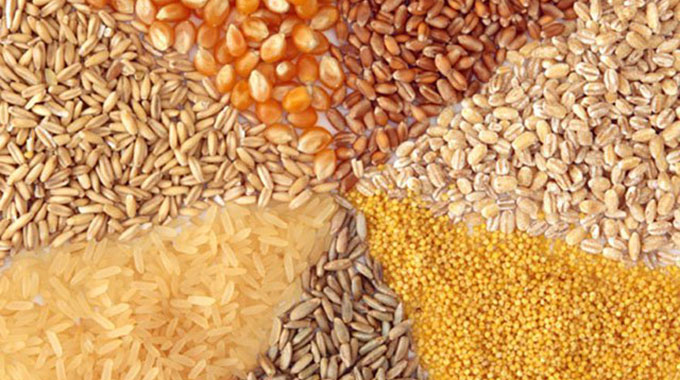EDITORIAL COMMENT : Small grains could make a difference

The 2019-2020 cropping season is late and projections point to reduced rainfall.
Small or traditional grains stand a better chance of producing something that will ameliorate the extent and impact of reduced harvest this year.
Faced with prospects of less rainfall and the corresponding reduction in yields, the Ministry of Lands, Agriculture, Water and Rural Resettlement and weather experts last week advised the need to plant short-season varieties or traditional small grains.
There is consensus that the rainy season is two months late.
That has serious implications on what the nation should be doing in the next three months when normally the country would start to tap into grain crops planted during the first half of the 2019-2020 rainfall season.
The advice on short-season varieties and traditional small grains is driven by the need to ensure that there is local grain production, which can then be complemented by imports to ensure national food security.
In the meantime, two measures should be activated as soon as possible.
The first, which should be two-pronged, must seek to encourage farmers, especially smallholder growers to switch to short-season and traditional small grains while practising water conservation methods.
Parallel to this, agricultural extension officers — where they still exist — in conjunction with farmer organisations, need to spread the message of short-season varieties and traditional grains fast, far and wide.
An informed community can adapt and adopt the best recommended approaches and cropping practices.
The second aspect of the two measures is to ensure coordination of seed houses so that supply of seed for short-season and traditional small grain crops is readily available in areas expected to benefit from whatever rainfall is due in the remaining phase of the 2019-2020 rainfall season.
The extension officers would continue to work closely with farmers to ensure producers derive maximum benefit from whatever recommended cropping patterns they would have adopted.
Israel has been able to produce food for its population essentially by employing technologies that rely on maximising the use of available water supply.
More than half of its land is desert and the climate and lack of water resources are naturally not in favour of agriculture.
So there is still hope, but perhaps this is a window of opportunity that helps us to reconsider and evaluate alternative approaches to using the water resource.
But this is also where Command Agriculture or a programme along the lines of Operation Maguta should kick-in, all making Zimbabwe reduce the scope of its reliance on anticipated grain/food imports.
Imports cannot be ruled out this year because of the nature of seasonal changes in rainfall patterns.
However, the cost of and time for raising hard currency to buy grain on the international market require judicious use of resources, allowing for lead time, shipment on the high seas and overland transportation of the grain from ports such as Beira and Durban to Harare and Bulawayo.
The National Railways of Zimbabwe (NRZ) has not always been known for ensuring the safety of customers’ cargo, so while shipment and movement of grain is being planned, tighter security should be implemented to plug loopholes that could result in leakages.
The potential for pilferages is likely to be greater because of general scarcity of grain.
The international community in the form of the World Food Programme and others should come to the rescue.
What will be critical, going forward, is to ensure that the supply chain is not abused and that incidents such as those reported in Chimanimani, where aid intended for victims of Cyclone Idai was pilfered, are not repeated.
Fortunately, the loot was intercepted and those behind the callous act arrested.
Transparency will be key to foster continued support from the international community.
Global support could also factor in at the stage of supply of short-season and small grain seed.
The thinking being that if assistance is in the supply of seed, the result will be less demand for imports of grain.
Recent figures relating to imports from regional countries put the cost of a tonne of grain at USD$600 as compared to the world price of US$240-US$250 a tonne.
This is unacceptable profiteering. China has a way of dealing instantly with such rapacious greed.
The recently-introduced subsidy on maize-meal should be seen in the wider context of seeking to ensure accessibility of the commodity in circumstances that threaten household food security for the majority of Zimbabweans.
To lessen the impact of the outcome of the rainfall season on crops, there is need for action right away, while at the same time rethinking best water conservation practices to maximise moisture retention as insurance for better crop harvests.








Comments